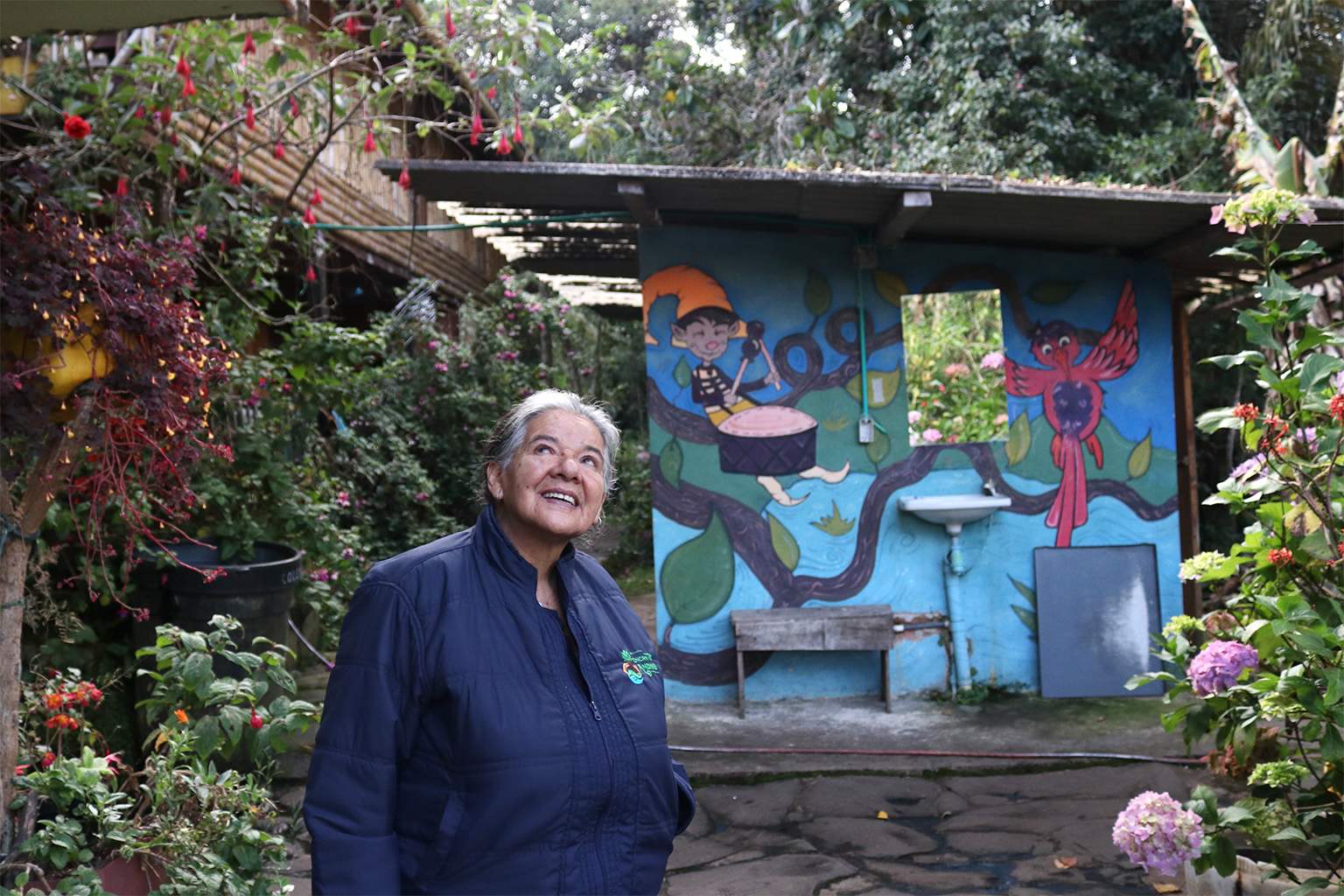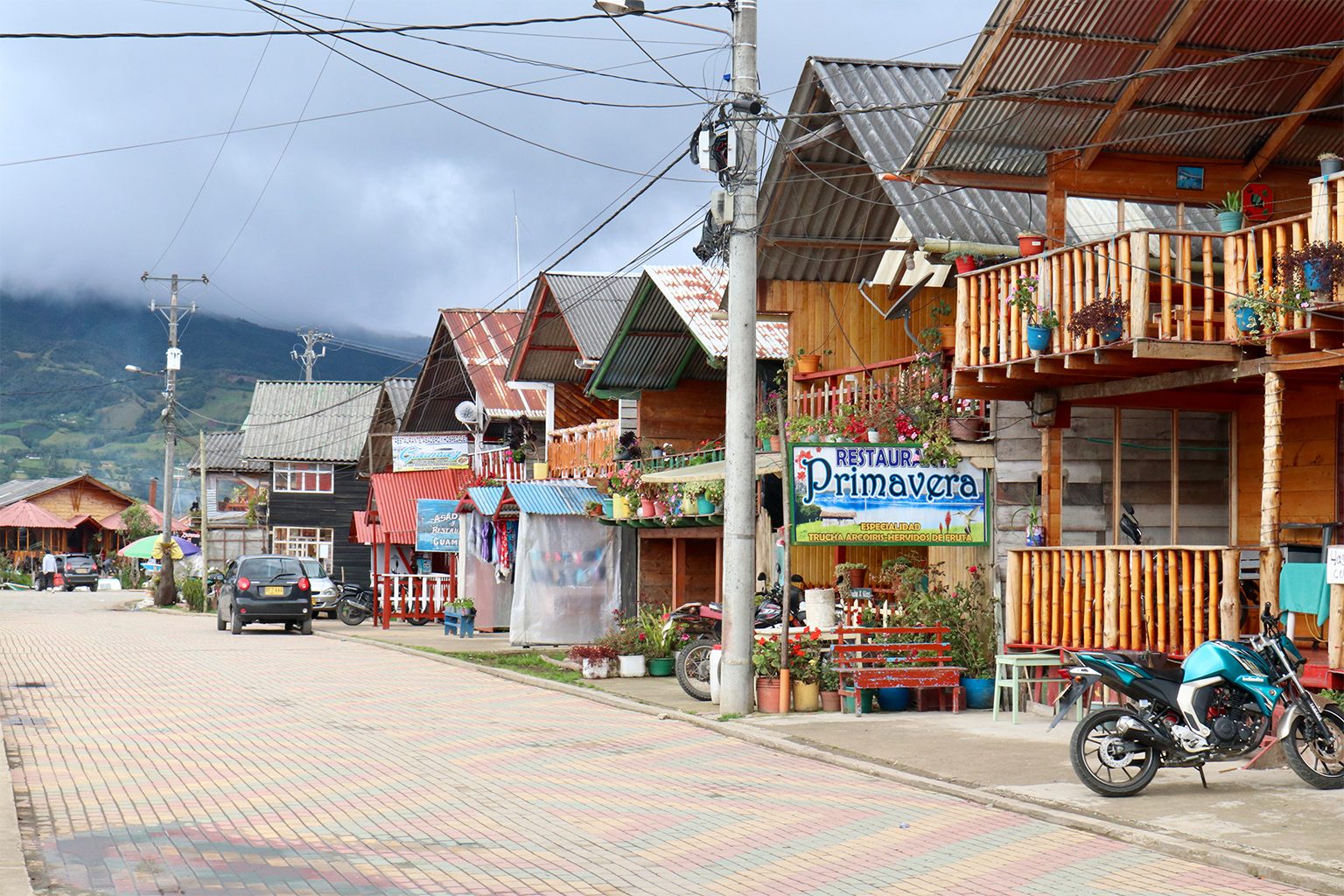
- In Colombia, the landmark 2016 peace accords with the FARC heralded hopes of ushering in bird-watching tourism in previously inaccessible, biodiverse regions.
- Birding tourism has unique advantages, including dedicated bird-watchers who will pay good money to go to remote locations.
- But the pandemic, protests, and the persistent perception of insecurity has stymied the country’s bird tourism industry from reaching its full potential.
PUTUMAYO, Colombia — When Jonh Jairo Mueses-Cisneros was approached by leadership at Corpoamazonia about turning Colombia’s southwestern department of Putumayo into a bird-watching hotspot more than 10 years ago, he was skeptical. To begin with, he was a herpetologist, trained in the study of reptiles and amphibians, not in birds. But Mueses-Cisneros, a Putumayo native from the town of Sibundoy, decided he was up for the challenge.
Corpoamazonia, or the Corporation for the Sustainable Development of Southern Amazonia, is a state-owned company that manages Colombia’s territory and natural resources. And at the time, it was implementing a project known as AICA Putumayo, which established what’s known as Important Areas for the Conservation of Birds (or “AICAs”) and included a community participation and environmental education project. Mueses-Cisneros surrounded himself with bird experts, and in 2010 designed a bird-watching and conservation course that would go on to train 124 children, farmers and professionals in biology, taxonomy, ecology, field work and bird tourism.
At the time, he said, despite the more than 850 species of birds here, many of them endemic, no one was talking about bird-watching in the area. Putumayo shares borders with Peru and Ecuador, and has long been plagued by violence and drug trafficking. While the region’s lush verdant landscape is teeming with a variety of birds, frogs, flora and fauna as well as waterfalls and scenic trails, the unrest made much of its biodiverse geography inaccessible.
“Colombia should be the number one place to go bird-watching in the world, but it’s not, and it hasn’t been because of conflict, and also because of lack of access to many places,” said Natalia Ocampo, assistant professor of conservation ecology at the University of California, Santa Cruz.

Peace agreement ushers in opportunity
The 2016 peace deal between the government and the Armed Revolutionary Forces of Colombia (FARC) brought hopes of opening up many previously restricted regions to ecotourism, and to bird tourism in particular, which offers benefits not offered by other types of tourism, Ocampo said.
“Bird-watchers are willing to go to any lengths to see the species that they want to see, even if those places are hard to access, or don’t have any other attractions,” she added. “Even ecotourism typically offers a cluster of activities like canoeing, rafting or rappelling. Bird-watching is all about the species, so these birdwatchers are willing to go to places that maybe no one else will go.”
According to Ocampo, Mueses-Cisneros and other Putumayo residents, the peace deal was instrumental in opening up the region to bird tourism in particular.
“It was very important, because many regions of our province prior to these agreements could not be visited,” Mueses-Cisneros said. “Many of these sites were dangerous. Nobody entered. And when the whole issue of the agreement started, people began to understand that ‘look, there is biodiversity here.’”

First seeds of tourism
For example, when Concepción Matabanchoy, environmental activist and owner of the Encanto Andino Nature Reserve in Pasto, Nariño, first started an environmental organization in 1990, it was an implausible idea. She was driven by a passion to protect her hometown’s wildlife and biodiversity from deforestation due to logging, an industry that trapped many in what she calls a “vicious circle” of debt.
“We began to look at an alternative that can generate income by offering ecotourism,” she said, noting that the idea was unheard of at the time.
She wanted the project to be homegrown, not like what she calls the “paternalistic” ecotourism efforts she had seen that generated dependency. But her plans were thrown in disarray when the town was captured by the FARC in 2000, followed by a killing spree and economic tailspin, turning it into a “red zone,” or conflict region.
“We were hit very hard in 2000,” Matabanchoy said. “Very hard. Because then no one came. Who was going to go to a red zone?”
When she found out she was among those being targeted by the FARC, she fled briefly to the neighboring department of Nariño. She returned as soon as she could, but she said the project didn’t really take off until 2016, when tourists started to arrive, many of them for birding. Nowadays the lakeside town, a 20-minute boat ride away from Matabanchoy’s reserve, is dotted with picturesque bridges, colorful restaurants and souvenir shops, patterned brick roads and eye-catching boats waiting to escort tourists.
Birding is also a way to bring economic development to areas that don’t destroy their natural resources or their cultural identity, in a region with a large population of Indigenous Colombians and campesinos, or small farmers.
“Tourism is good. and tourism without losing our identity, of being campesinos, of being Indigenous, to continue cultivating the land,” Matabanchoy said. “So that, for us, is very important. We don’t want a massive tourism that comes to contaminate, that comes to destroy what we’ve worked so hard for.”

Building up birding infrastructure
UC Santa Cruz’s Ocampo said there aren’t official numbers that track bird tourism, but she has shown in her research by compiling bird sightings from citizen scientist database eBird that conflict-ridden zones that tourists previously avoided completely became birding hotspots starting in 2016. Putumayo, in particular, has seen a boom, she told Mongabay.
“Putumayo went from being inaccessible and dangerous to becoming one of the hottest bird-watching destinations in Colombia,” Ocampo said.
Residents of the province who work in tourism say they have noticed something similar.
Juan Pablo Ramirez Huaca left Putumayo when he was 16 and vowed to never come back, put off by the violence gripping the region at the time. But when he had to return to take care of his parents in 2011, he decided to bet on tourism. He opened two businesses: a travel agency, Ecoturismo Putumayo, and a hotel, the Posada Turistica Dantayaco. He originally thought it would center around camping, but later realized the potential for bird tourism that existed in Putumayo.
“We began to see that Putumayo could be exploited, in a good sense of the word, in the field of birding,” he said.

Bird-watching tourism requires specific infrastructure to be successful: safety, and the perception of safety; knowledgeable, English-speaking local bird guides; and lodgings that cater to birders who tend to be older than typical tourists. Those features include things like early breakfast, reliable hot water, and familiar food.
Huaca started to improve the accommodations at his nine-bedroom eco-lodge to meet what he saw as a growing demand for more upscale lodging. The hotel includes four suites, replete with hot tubs and majestic views of thick forests, silent except for birds chirping only 15 minutes from the chaotic, nondescript city center that faces frequent water shortages. His is one of a handful of high-end hotels that have popped up in the region in recent years, and he has had to learn to cater to foreign dietary preferences.
“The word veganism — I did not know it until tourism arrived here,” he said.
Still, Huaca said bird-watchers make up a small part of his business compared to ayahuasca tourism, which currently dominates. But he said they hold promise, since bird tourists are older and willing to spend more money than ayahuasca tourists, who are typically young backpackers.
Huaca said the local tourism industry still lacks publicity, training, an adequate number of accommodations, and enough English speakers. Plus, he said Putumayo still suffers the stigma of being known as a violent region. The U.S. Embassy in Bogotá currently lists Putumayo under its Level 3 Travel Advisory and urges citizens to “reconsider travel” there due to violent crime including armed robbery and murder. That blemish, Huaca said, and lack of marketing, prevents them from attracting more tourists.
“We are anonymous,” he said. “We are in a wealth that has not been promoted and disclosed.”
At the same time as the peace deal with the FARC brought hopes of tapping into the country’s underutilized ecotourism potential, it also brought higher levels of deforestation, according to data compiled by the International Crisis Group, a think tank based in Brussels and New York. An unintended effect of the violence was that it left much of the Colombian countryside untouched by modernization. When the FARC, which often restricted activities like logging, hunting and pollution, agreed to disband, other armed groups, miners, loggers and cattle ranchers moved into those areas and cleared and burned forests for both legal and illegal activity, the ICG documented.
The current conservative government, which campaigned on dismantling the peace agreement, has dragged its feet on implementation. Safety is declining in some places previously seen as more secure after the accords.

Birding as a conservation strategy
Birding tourism strategies often coincide with conservation goals, since birders are looking for endemic or threatened birds, which incentivizes communities to conserve related habitats, according to Ocampo. And many Putumayo residents say the same, which has given rise to the oft-cited phrase that “a tree is worth more planted than toppled.”
“I do believe that it is an option for having this win-win situation for conservation and economic development,” Ocampo said. “But I do think that we still have a ways to go to get to the full potential.”
One of the students who took the AICA course on birding and conservation nine years ago was Hernan Alexander Alvarez, a bird and ecotourism guide in Putumayo’s capital of Mocoa. He now works with the organization Alas Putumayo. After the organization worked to host the country’s national ornithology meeting in Mocoa in 2017, he said it helped put Putumayo on the map as a birding destination.
But the country’s tourism industry has taken a hit from the COVID-19 pandemic and nationwide protests over inequality, corruption and police brutality in the past couple years. Although business owners who spoke to Mongabay said tourism is trickling back slowly, it’s far from pre-pandemic levels, and with the Omicron variant of the coronavirus raging, it’s unclear when or if it will.
Before Alvarez would show tourists popular birds like the paradise tanager and the cream-colored woodpecker, as well as vulnerable species like the coppery-chested jacamar, he said he has largely turned to other types of tourism work to support his wife and 18-month-old son, in whom he hopes to instill an appreciation of birds.
“The work I do is to show people that my province is no longer violence, it is not coca, that we have a future,” he said. “And that hopefully tourism will be one of the province’s main industries.”

Another former AICA student, Yehimi Fajardo Cardenas is now an environmental engineer and also works with Alas Putumayo, helping to educate the next generation of environmentalists through a birding and conservation course similar to the one she took, but funded by partnerships with organizations like Amazon Watch and Conservation International.
So far, 40 students between the ages of 7 and 20 have taken part in the free three-year course.
“They are the ones that today are those guardians of the birds,” Cardenas said. “They are taking care of and hoping for the territory.”
Banner image: Concepción Matabanchoy, an environmental activist and owner of the Encanto Andino Nature Reserve. Image courtesy of Genevieve Glatsky.
Citation:
Ocampo-Peñuela, N., & Winton, R. S. (2017). Economic and conservation potential of bird-watching tourism in postconflict Colombia. Tropical Conservation Science, 10. doi:10.1177/1940082917733862
Grounded by conflict and COVID, Colombia’s bird tourism struggles to soar
Source: Trends News

0 Comments